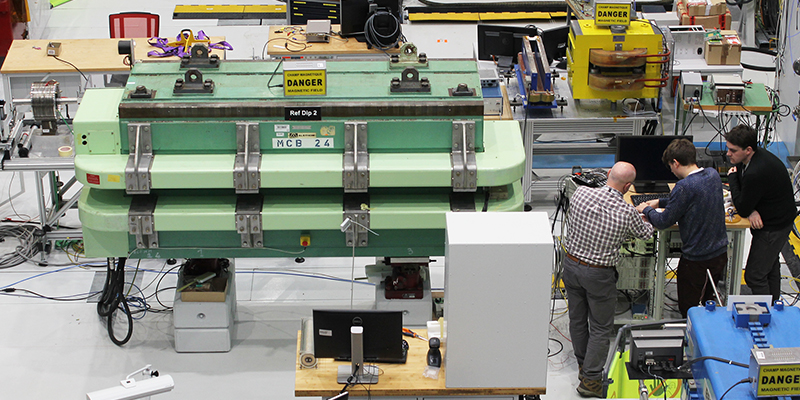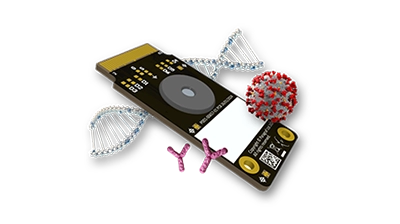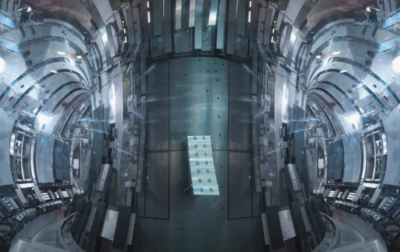By Ellie Galanis, product owner for the GHS Series of graphene Hall sensors, Paragraf.

(Image: CERN – showing Paragraf and CERN scientists setting up the graphene Hall sensor for performance evaluation at CERN Magnetic Measurement laboratory in February 2020)
From the outset, it was an ambitious partnership. How could a technology company in the UK help the world’s most famous particle accelerator to improve the accuracy of magnetic measurement using a new device that was not even commercially available?
Yet that was the starting point for an exciting collaborative project between our company Paragraf, a spin-out from the University of Cambridge, and CERN, the European Organization for Nuclear Research. Since then, the partnership has resulted in some highly encouraging findings that could have a profound effect on the way that magnetic measurements in particle accelerators are conducted.
So, how did we go about helping CERN address critical challenges in mapping magnetic fields, namely: producing accurate measurements of local field distributions in accelerator magnets, while eliminating artefacts and reducing uncertainties stemming from conventional sensors?
The answer comes from looking at the shortcomings of the existing technology. Particle accelerators require large numbers of normal and superconducting magnets, and so high-precision and reliable magnetic measurements are critical for day-to-day operations. One of the tools available to accelerator scientists for local field mapping is the Hall probe, which outputs a voltage proportional to the strength of the field components which are perpendicular to the plane of the sensor.
However, there is a well-known problem here. Existing Hall effect sensors all exhibit planar Hall effects where field components which are not perpendicular to the sensing plane produce false signals. This is because the sensing layer is effectively three-dimensional, with some amount of depth; hence in-plane field components also end up affecting the voltage output. These false signals, together with the non-linear response to the field strength, increase the measurement uncertainty and thus limit the application of Hall sensors. Separating the true signals from the systematic errors is a complicated and time-consuming process.
That is where Paragraf comes into equation. Over the past several years, our team of scientists and engineers have been developing a Hall effect sensor which has an active sensing component made of atomically thin graphene, which is two-dimensional. This composition means that the device only senses magnetic fields along one direction; giving a negligible planar Hall effect. This characteristic – unique to our design – enables the true perpendicular magnetic field value to be obtained, allowing for higher precision mapping of the local magnetic field.
CERN spotted the potential of graphene-based Hall probes for magnetic measurements, and over the course of the past year has been performing calibrated field measurements in its state-of-the-art reference magnets. The results have been very promising so far, we are delighted to say, with the tests proving that the sensor has no planar effect.
More in-depth evaluation is now planned, with the eventual aim of using the sensors to build a novel mapping system for magnetic fields by mounting a stack of sensors on a rotating shaft. The compelling advantage would be measurements of the harmonic content of the magnetic field in accelerator magnets almost point-like along the magnet axis – a genuinely innovative advance. The GHS has enabled more direct, more accurate and yet far simpler and faster measurements than ever before.
The next step is the release of a joint white paper to communicate the work to date. This will provide more information on the lack of planar Hall effect, as well as detailing its high performance across a range of magnetic fields.
In conclusion, then, it is fair to say that our collaboration with CERN has been a thoroughly rewarding experience; enabling Paragraf to conclusively determine the lack of a planar Hall effect in its GHS and enabling CERN to devise new and improved methods for the characterisation and effective operation of accelerator magnets. A fantastic achievement providing a firm foundation for the exciting developments to come.







